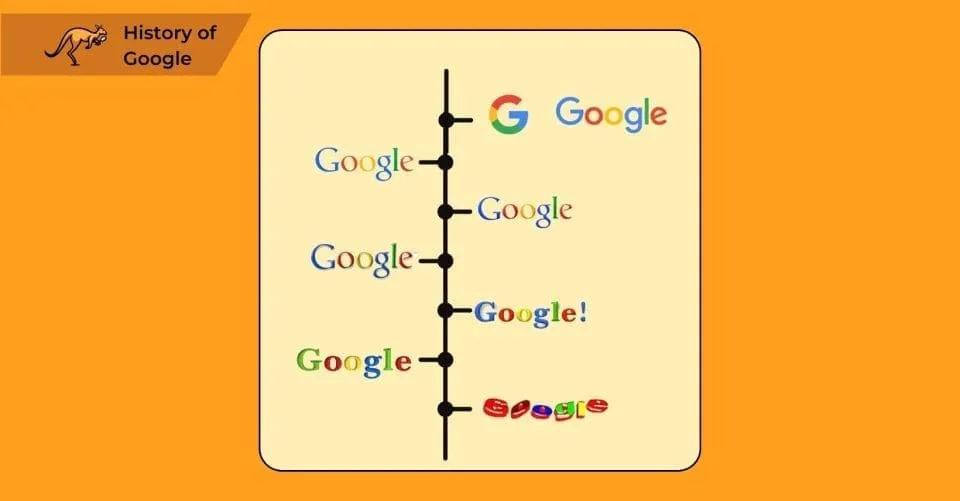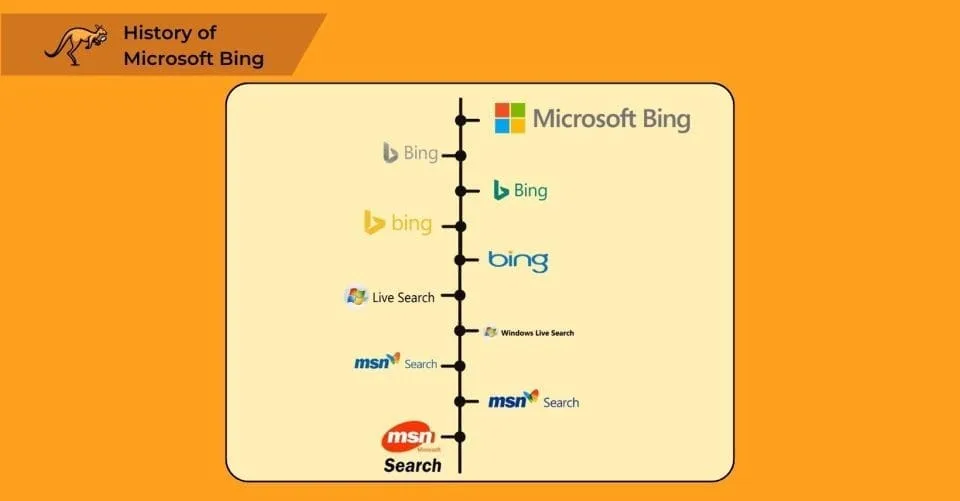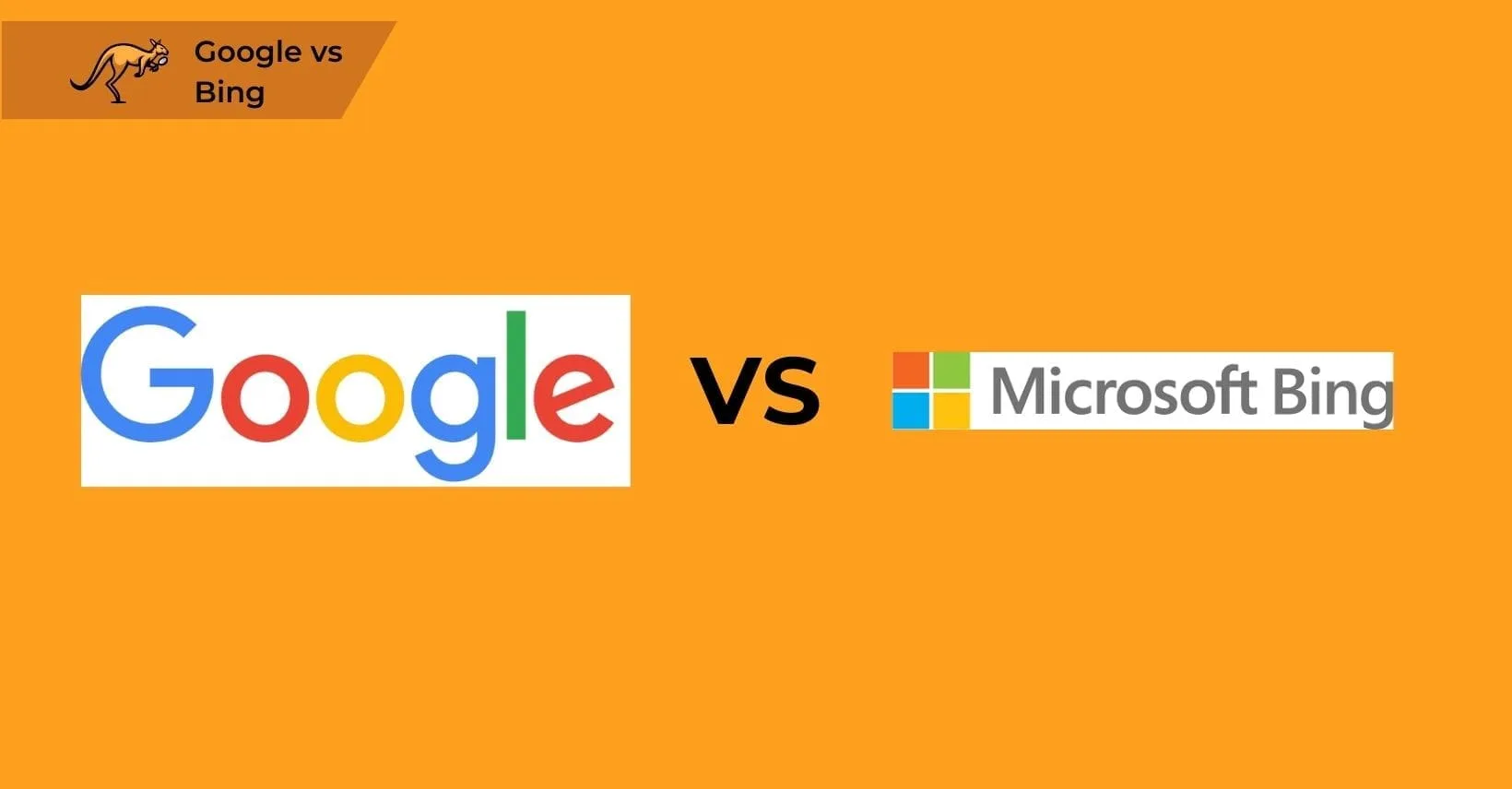Search engines are now the primary means by which most people access the internet.
Most website traffic begins with a search engine, making the top spot on search engine results pages the main target for SEO experts.
Search engines have only increased over time, highlighting their significant role globally.
Introduced in 1990, Archie was the first search engine, paving the way for others like Yandex, Baidu, and even Amazon to enter the market.
Although Google and Bing share a similar design, they are the most widely used and recommended search engines globally.
Google, in particular, stands out as the leading search engine, commonly set as the default choice by users.
Bing, owned by Microsoft, competes strongly but still trails behind Google regarding search traffic, algorithms, and database size.
However, Bing holds its unique advantages, complicating the direct comparison between the two.
For marketers, it’s crucial to understand how these search engines align with paid advertising strategies to maximize the reach and impact of marketing efforts.
Bing and Google are essential for achieving broad visibility, with millions relying on Bing daily.
It’s important to recognize each’s strengths and limitations to effectively utilize their capabilities in enhancing online visibility.
As we explore the nuances between Google and Bing, we also look deeper into Google’s journey to dominance in the search engine market.
The History of Google

Google is the most utilized search engine worldwide. It was founded by Larry Page and Sergey Brin in 1998 while they were Ph.D. students at Stanford University in California.
Their venture has become a powerhouse bolstered by numerous acquisitions, partnerships, and innovations.
The company offers a suite of productivity tools, including Google Docs, Sheets, and Slides, alongside Gmail, which have all contributed to its expansion.
Furthermore, Google provides various time management solutions, such as Google Calendar and Google Drive, a leading cloud storage service.
Google’s portfolio also encompasses communication tools, Google Maps for navigation, language translation services, YouTube for video sharing, and photo editing tools.
Currently, Google is advancing the Android mobile operating system, the widely used Google Chrome browser, and Chrome OS. Between 2010 and 2015, the company pivoted towards hardware, partnering with major electronics manufacturers to develop new devices.
In October 2016, Google launched several hardware products, including the Google Home smart speaker and Google Wi-Fi. However, some ventures, like their virtual reality headsets, didn’t meet expectations.
Google has also ventured into providing internet services through Google Fibre, Google Fi, and Google Station. As of 2023, Google remains the most visited website globally. Following the introduction of controversial generative AI technologies,
Google launched Bard, an AI chatbot designed to rival ChatGPT. Still in its nascent stage, this technology has predominantly yielded unreliable outputs and poses potential risks to Google’s search integrity.
With competition heating up in the realm of digital innovation, we might consider how other companies, such as Microsoft with its Bing search engine, are also making significant strides.
The History of Microsoft Bing

Microsoft launched its search engine, Bing, 2009 a decade after Google debuted.
Despite its modest market share, Microsoft has continued to enhance Bing, using it to strengthen its other products and grow its advertising revenue.
Initially, Microsoft entered the search engine space over two decades ago with MSN Search, utilizing technology from Inktomi, Looksmart, and AltaVista.
By 2005, Microsoft had developed its web crawler, and a year later, it introduced its image search algorithm and advertising platform.
Over time, Microsoft has made several updates, including rebranding its search engine to Bing, which replaced Live Search in 2009. 2006, Microsoft shifted from third-party services to its image search technology and ad service, the MSN ad center.
Further changes took place in 2007 under new CEO Satya Nadella, who later became Microsoft’s chief executive and emphasized Bing’s importance to Microsoft’s strategy.
Satya Nadella, who joined Microsoft over two decades ago with engineering, computer science, and business degrees, recognized Bing’s potential early on.
Under his leadership, Microsoft restructured and merged various operations, culminating in the launch of Bing.
About eighteen months after Nadella’s appointment as CEO, Bing began to profit and has since been integrated into multiple Microsoft products, such as Windows, Xbox, Azure, Office 365, and Cortana.
Bing has also ventured into AI, voice search, and machine learning technologies.
Similar to Google, these advancements have impacted the accuracy of search results, requiring cautious use. Microsoft’s acquisitions of GitHub and LinkedIn have further broadened Bing’s reach.
One of Bing’s vector search algorithms is shared openly on GitHub, enhancing connections with the developer and research communities.
As Microsoft continues integrating Bing across its network and platforms, it will be interesting to observe how it compares to its competitors in market share, particularly industry giant Google.
Google vs Bing: Market Share

Google and Bing differ fundamentally in their approach to search, with Google focusing on comprehensive indexing and algorithm sophistication while Bing emphasizes visual presentation and content quality, which explains why third-party estimates show Google leads with about 90% of all online searches.
In the desktop realm, Google commands an 84% share and an even higher 95% on mobile devices. Bing holds a 9% share in desktop searches, though it barely touches 1% on mobile.
This distribution is likely influenced by Google being the default search engine on the widespread Android systems. In contrast, Bing defaults primarily to the much less common Windows phones.
Despite its smaller slice of the market, Bing still processes over 12 billion queries monthly.
Moreover, its affiliation with other platforms like Yahoo and DuckDuckGo enhances its impact beyond initial appearances.
Bing handles over 30% of search queries in certain American regions and supports services like Amazon Alexa and Apple Siri. This integration into various technologies suggests a complexity in comparing workloads between Bing and Google.
The nuances of how these search engines index and crawl websites will provide further insights into their operational differences and strengths.
Bing vs Google: Indexing and Crawling Comparison
Google’s indexing system processes billions of web pages through Googlebot crawlers that efficiently scan and categorize content at massive scale, while Bing’s crawlers index fewer pages but apply stricter quality filters that focus on authoritative sources and contextual relevance.
Bing attracts users who prefer quality over quantity because Bing, though smaller in its index size with millions of web pages, prioritizes the authority and relevance of content, offering a less cluttered alternative to Google’s sometimes overwhelming results.
Its crawlers are designed to highlight authoritative and relevant information, distinguishing Bing as a platform that values content integrity over sheer volume.
This approach positions Bing as a preferable option for users desiring quality and authoritative content, especially as Google’s search results increasingly become saturated with SEO-optimized material that may not always prioritize user relevance or content quality.
The difference in their indexing strategies reveals Google’s focus on quantity, making it an ideal choice for those seeking extensive information.
At the same time, Bing appeals to users who are searching for reliable, quality content.
As both search engines strive to meet user needs through different philosophies – Google covering the breadth of the internet and Bing ensuring the relevance and quality of information – the debate on which search engine provides superior results continues.
Moving forward, exploring how these strategies impact the quality of search engine results becomes crucial, shedding light on the ongoing comparison between Google and Bing.
Google vs Bing: Quality of Search Engine Results
Determining which search engine—Microsoft Bing or Google—delivers superior results can be challenging, given the vast array of search queries they process.
Generally, both Google and Bing meet the needs of most users by providing search capabilities across text, videos, images, news, and major shopping platforms.
Each engine consistently offers relevant results and links to pertinent websites, demonstrating their effectiveness in handling standard search functions.
While the appearance of search result pages from Bing and Google is quite similar, Bing enhances its service with unique features.
Notably, Bing uses its “snapshot” feature to offer quick summaries and taps into Microsoft’s Satori knowledge system to refine the accuracy and relevance of its results and suggestions.
Furthermore, Bing often incorporates eye-catching infographics in its search results, enhancing visual appeal and information accessibility.
As search engines like Bing pulls text samples from trusted sites such as Wikipedia to display prominently at the top of search results, it leads us to explore how such features, including Featured Snippets and Summaries, further shape user experience.
Featured Snippets and Summaries
Featured snippets can sometimes lead to confusion. Google’s snippets often originate from highly reliable sites due to its EEAT system, aiming to manipulate search algorithms effectively. Despite this, the information presented might not align well with your actual search query.
In contrast, Bing uses AI to compile snippets from various sources into a brief paragraph, which can result in misleading interpretations as the AI often extracts text out of context.
Both Google and Bing try to summarize content from multiple sources for direct queries. Yet, inaccuracies persist even when they cite correct sources.
It’s crucial to verify by reading the full text on the original websites rather than relying solely on the snippets at the top of search results.
How these snippets are visually presented also affects their perceived credibility and usefulness, a subtle yet important aspect of website design.
Design and Aesthetics
Google’s platform is simple and anchored by a search bar at the top for entering queries.
It uses an advanced algorithm that prioritizes relevance and the quality of content. Google enhances search results with tools like the Knowledge Graph and Google Now, which directly provide relevant facts and personalized updates on the results page.
Bing distinguishes itself with a visually richer interface that emphasizes larger images and videos in search results, which contrasts with Google’s minimalist design that prioritizes text-based results and faster loading times.
Bing also tailors results based on context, location, and past searches and features a dynamic homepage with daily images and a menu for exploring different search results.
Both search engines incorporate additional functionalities like voice search and map integrations, showing that choosing between Google and Bing often depends on personal preference.
This brings us to consider how these platforms perform specifically in image searches, where visual elements play a pivotal role.
Image Search Engines: Google vs Bing
Bing and Google provide useful image search tools, each with distinctive features. Google’s image search excels in simplicity and functionality, allowing users to find desired images swiftly through an intuitive interface and offering additional filters like size, color, and type.
Bing’s image search prioritizes visual appeal by displaying larger previews and more detailed image information than Google, making it easier for users to locate visually distinct photos without clicking through to the source, while Google’s image search offers more refined filtering options and faster loading times. Bing also allows users to filter images by license type and focus searches on specific topics or items.
While Google’s image search results are more streamlined and organized, Bing’s results are more visually engaging. Preferences between these two may vary based on individual needs for functionality or aesthetic presentation.
Interestingly, Google has recently introduced AI-generated images into its search capabilities. This move could blend generated artwork with traditional image searches.
This development invites us to consider the future of search engines in handling both real and synthetic visuals, which naturally leads to a discussion on the comparative effectiveness of video search results on Bing versus Google.
Bing vs Google Video Search Results
Both Google and Bing provide ways to search for videos but handle these searches differently. Google, owning YouTube, often points its users to YouTube links for video content.
This method opens a new page, which can be a bit bothersome, even though it gives access to a vast library of videos. On the other hand, Bing integrates video search directly on its main search page, allowing users to view videos without leaving the site.
This difference mainly stems from Google’s preference for directing traffic to YouTube, where viewers can interact with Google’s advertisements. At the same time, Bing aims to keep users within its interface.
Despite Bing’s visually appealing search experience, YouTube’s dominance in video-sharing means that most people are likely to bypass search engines and head directly to YouTube for video content, which also influences how videos are shared on social media.
It’s interesting to see how these approaches reflect broader strategies in search engine optimization tools, where Bing and Google also have unique offerings.
SEO Tools: Bing vs Google
Search engine optimization (SEO) thrives on accessible data, making robust tools essential for industry professionals. Both Google and Microsoft Bing offer effective keyword research tools that deliver critical performance metrics.
A standout feature of Microsoft Bing is its capability to import data directly from Google Search Console, allowing users to leverage Google’s extensive datasets within Bing’s environment.
Additionally, Bing sets itself apart by generating SEO Reports bi-weekly. These reports provide actionable insights and recommendations at the page level aimed at enhancing SEO outcomes.
Users can access these insights daily, ensuring continual improvement in targeted SEO areas.
While Bing benefits from integrating Google’s data, Google maintains a competitive edge due to its widespread acceptance as the market leader.
A vast array of third-party analytics tools are designed to integrate seamlessly with Google, though not all are compatible with Bing. For optimal tool compatibility, users should verify on an individual basis.
As both giants continue to evolve their offerings, it’s interesting to note how they compare in other aspects of AI-driven services, like their respective chatbot tools.
Google vs Microsoft Bing: AI Chatbot Tools
In 2023, Microsoft launched Bing Chat, a chatbot that utilizes the same technology as ChatGPT and is backed by a substantial $10 billion investment from Microsoft.
This integration makes searches more personalized and interactive, particularly for complex queries.
Traditional search engines might stumble with tasks like planning vacations or choosing gifts, but Bing Chat excels by extracting detailed information from user queries.
One distinct advantage of Bing Chat over ChatGPT is its ability to access live internet data, allowing for comparisons or evaluations that typically require multiple manual searches.
Google’s Bard and Microsoft’s Bing Chat represent different AI integration approaches, with Bard operating as a standalone service separate from Google’s search engine, while Bing Chat functions as a fully integrated component within the Microsoft Bing search experience, allowing for seamless transitions between traditional search and AI-assisted conversations.
This seamless integration is designed to enhance user convenience. However, it remains crucial to verify the accuracy of any AI-generated information.
Despite their sophistication, these AI chatbots function more like advanced autocorrect systems, assembling plausible word combinations rather than delivering verified truths. They are best used as initial tools for broader research.
With continuous advancements, it will be interesting to see how Microsoft further enhances Bing Chat to respond to queries and anticipate user needs in ways that could redefine interactive searches.
Bing’s Special Features
Bing, a search industry innovator, pioneered the SEO disavow tool before Google adopted it. The company has enhanced search experiences with “intelligent search” results and updated news summaries, providing users with more detailed information.
The Bing API, now an essential tool for SEO experts, supports the function of privacy-focused search engines like DuckDuckGo through open access.
During the Microsoft Advertising Partner Summit, Microsoft highlighted substantial investments in its advertising division. Initially developed through a partnership with Yahoo, Bing Ads played a critical role early on.
Advertisers, however, often struggled with the complexity of managing the relationship between Bing and Yahoo. While Bing ads may be more complex than Google AdWords, the network of sites displaying Bing ads matches Google’s breadth.
Google and Bing each deliver valuable advertising services, serving distinct sets of sites with their ads.
As we look at the evolution of these platforms, it will be interesting to see how Bing’s recent enhancements in SEO might influence future search trends.
Bing SEO
Although Bing holds a considerable portion of the global search market share, it still trails far behind Google, attracting less focus from SEO experts.
Bing offers a wealth of data, yet its smaller user base complicates applying findings broadly across Google’s massive audience. Despite numerous benefits, Bing has not achieved broad acceptance among consumers and marketers alike.
The Microsoft Bing team has invested significant effort and determination to achieve 100 months of continuous development.
Bing has recorded multiple successes in blind tests but fails to meet user expectations for wider acceptance.
Despite these challenges, Bing has expanded its PC search market share more than fourfold since its launch. It now ranks as Microsoft’s fifth-largest division, generating nearly $7 billion from advertising revenues.
These accomplishments reflect Microsoft’s commitment to positioning Bing as a formidable rival to Google Search.
Optimizing for Bing SEO offers marketers access to Microsoft’s ecosystem of 12 billion monthly searches with potentially less competition than Google, making Bing a valuable component of any digital marketing plan that seeks to capture traffic from multiple search engines.
Although the ranking factors for Bing might be less transparent than those for Google, they generally involve meta descriptions, quality content, and similar fundamental criteria. Capabilities can potentially enhance your digital marketing efforts.
Understanding the Differences: Google and Bing
In conclusion, Bing and Google offer unique advantages in the search engine market. While Google continues to hold a dominant position, Bing’s significant market share and Microsoft’s dedicated efforts to refine and enhance its capabilities cannot be overlooked.
Bing has demonstrated its potential through substantial growth in PC search market share and success in blind tests, showcasing its ability to meet specific user and marketer needs.
As digital marketing strategies evolve, incorporating Bing alongside Google could offer a more diversified approach to reaching audiences, optimizing visibility, and maximizing advertising effectiveness.
Ultimately, leveraging the strengths of both platforms provides a balanced and effective digital marketing strategy.




